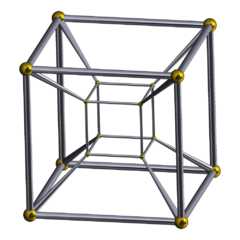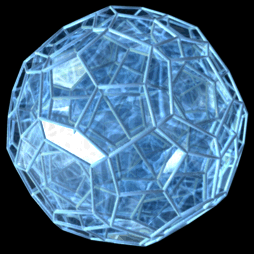Marinus wrote:Kooky, but still time is not part of the object. The object can move, and in that case, its position in time changes, but the object itself doesn't change.
That's true, but nowadays, scientists and mathematicians consider time as the fourth dimension, although I'd prefer a fourth geometric dimension.
I saw the wikipedia page on tesseracts a while back. It was fascinating, but the objects are nearly impossible to visualize because our brains aren't made to comprehend them. On coordinate plans, all of the axes intersect at 90° angles. How would a fourth axis intersect through the origin? I've always wondered that.
Also, I found an interesting pattern.
A 1-dimensional line has 2 0-dimensional dots.
A 2-dimensional square has 4 1-dimensional lines.
A 3-dimensional cube has 6 2-dimensional squares.
Basically, an x-dimensional object has 2x (x-1)-dimensional objects. Thus we can conclude:
A 4-dimensional tesseract has 8 3-dimensional cubes.
A 5-dimensional hypercube has 10 4-dimensional tesseracts.
A 6-dimensional hypercube has 12 5-dimensional hypercubes.
...
A 125-dimensional hypercube has 250 124-dimensional hypercubes.
















